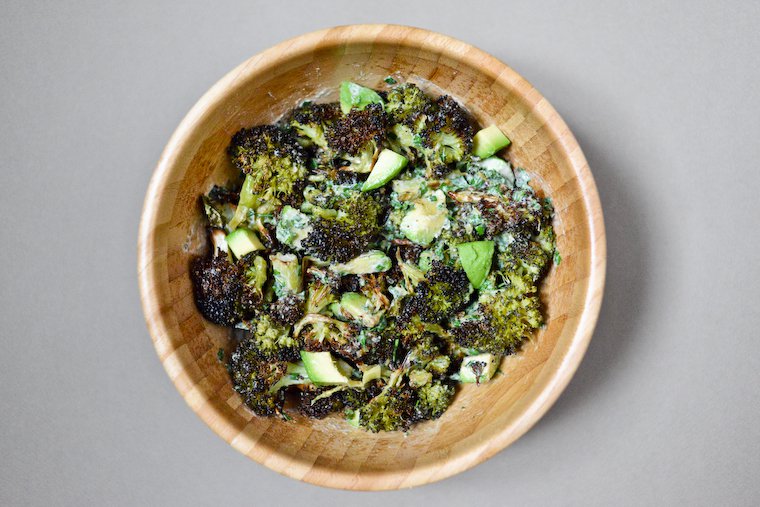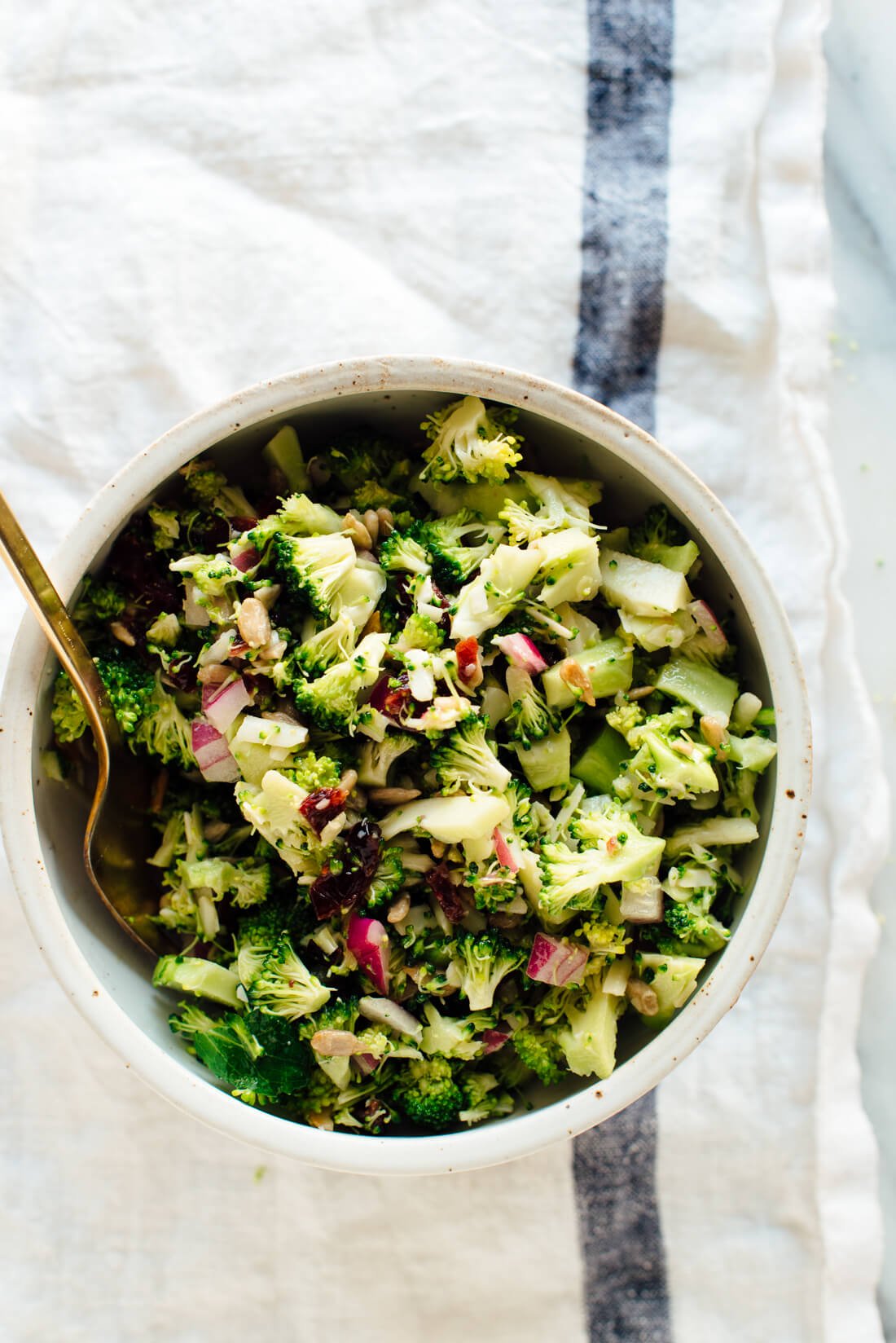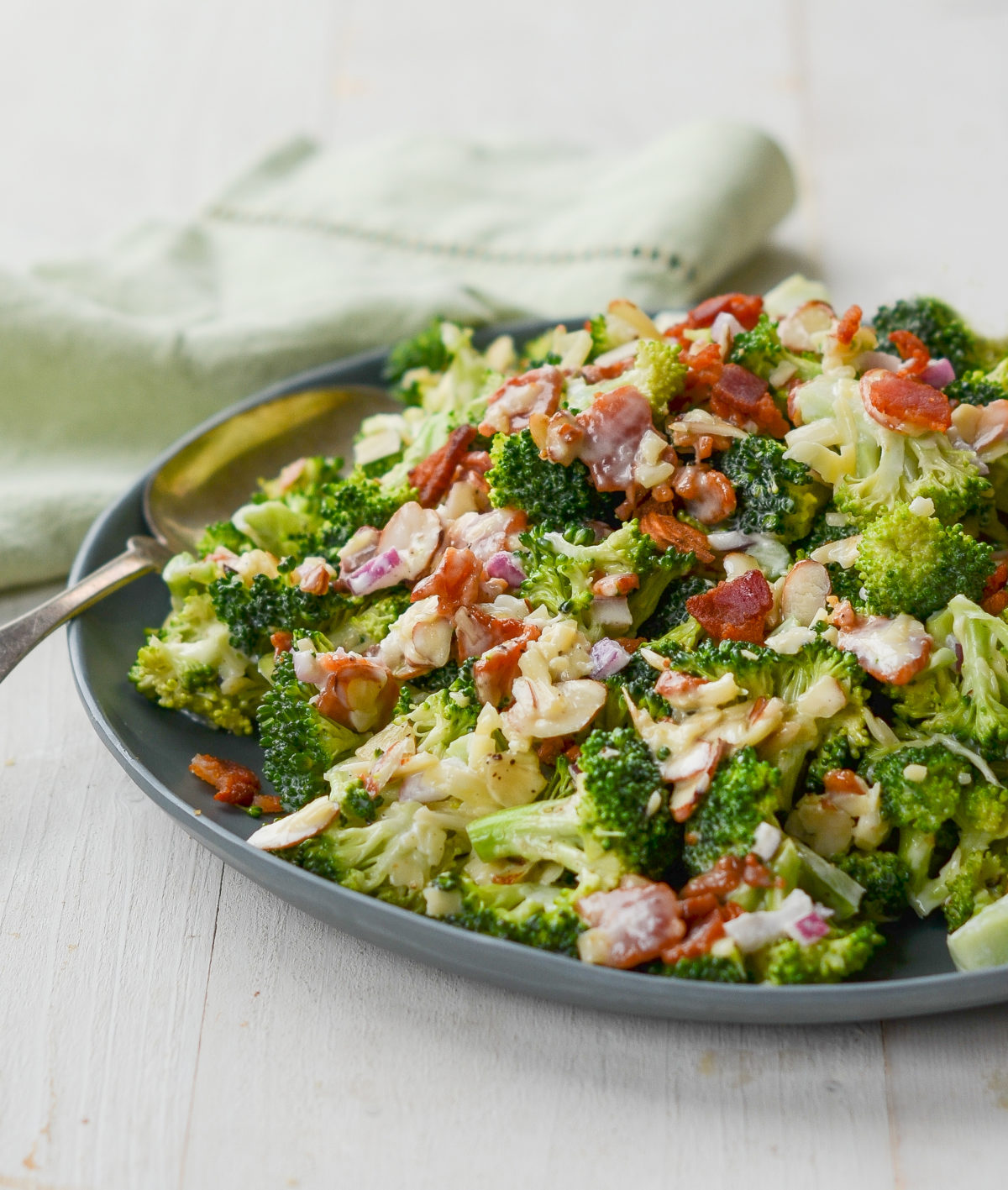Farm Newsletter
Week #10; the first sweet corn!
- On: July 21, 2021
 0
0
Folks, I do not have a full newsletter for you this week. Our printer just died. I did some quick research and Steve drove to town to pick up a new one. Wish me luck with setting up the printer drivers … if those still exist.
Beth
We are hiring
We have several openings for farmhands to replace crew members who are returning to school. We offer valuable work in a safe, friendly, outdoor environment. We will send you home with lots of healthy produce! Please spread the word. Learn more at www.tipiproduce.com/employment/ .
Basil Care
As usual, I encourage you to store your basil at room temperature in a glass of fresh water, just like a bouquet of flowers. Change the water every few days. Cold temperatures damage basil, and it will blacken in the fridge.
If you receive a large, branched stem, it should be cut into small stems, to avoid wilting. Some of this week’s basil is heavily branched, and we’re sure to send branched stems again in future.
Look at the photo and you’ll see that we can get five stems from this plant. Wet the plant, then cut free the bottom two stems (below my thumb), then the next two stems up the stalk (above my thumb, one is hidden). Cut the main stem just above that. Put all the stems in water. You’ll have a few loose leaves to deal with but most leaves will still be attached. Use a sharp knife or shears!
If your basil (or any greens) are wilted, try submerging in a basin of water. For basil, submerge just a few minutes in room temperature water. For kale, lettuce or spinach, submerge for 15 minutes in cold water. I hope this helps.
Veggie List & Veggie Notes
Week #10, July 22/23, 2021
– Weekly shares
– EOW/ green
Sweet corn, 9 or 10 ears. See notes.
Muskmelon
Green beans, 1.3 lb
Carrots, ~2 lb
Zucchini &/or yellow squash, 2 pieces
Cucumbers, ~3
Globe eggplant, 1
Walla Walla onion, 1
Basil, 1 large sprig
By site, everyone gets broccoli OR cherry tomatoes OR a second eggplant OR an extra zucchini OR something else.
Next week’s box will probably contain sweet corn, green beans, zucchini, cucumbers, Walla Walla onion, melon, green bell peppers and more.
Sweet corn – Now it’s summer! Every ear has bugs or bug damage at the tip. I suggest cutting off the tips before shucking the corn. Sweep the trimmed tips into the compost and you will never see the bugs.
Storage. Sweet corn is best when fresh, so we encourage you to eat it asap. Store in the refrigerator, in the husks if you have the room, or husked in a plastic bag.
Cooking. It is quicker to steam sweet corn than to boil it.
1.) Stand ears of corn upright in a tall pot. Put one inch of water in the pot.
2.) Bring the water to a boil. If the corn is cold when you begin cooking, steam for 5 – 6 minutes. If the corn starts at room temperature, steam for 4 – 5 minutes. The cooking time will vary somewhat depending on how many ears are in the pot. Pay attention to how the corn smells. The scent changes once the corn is ready. Another clue: water will bead on the corn until it is cooked. Don’t overcook it.
Muskmelon – Some are ripe and ready to eat. Some need to ripen a day or two on your kitchen counter. Keep at room temperature but refrigerate if not eaten within 2 – 3 days.
Green beans – Storage: Store in the warmest part of your refrigerator.
Carrots – Refrigerate in the bag.
RECIPES
Visit our 2020 Recipe Log or our 2019 Recipe Log or join our Facebook discussion group.

Pickled Carrots and Pickled Green Beans
Pickled Green Beans
These tangy, crunchy refrigerator pickles are a delicious summer snack, and they’re also a great addition to summer salads and sandwiches. Find them in the quinoa salad recipe below!
Prep time: 15 minutes, plus an overnight chill
Ingredients
1/2 cup hot water
1/4 cup rice vinegar
2 tablespoons white wine vinegar
1 tablespoon cane sugar
1 teaspoon sea salt
6 ounces green beans, trimmed
2 small dried chiles, rinsed
1 smashed garlic clove, rinsed
1 teaspoon mustard seeds, rinsed
- In a medium bowl or liquid measuring cup, combine the hot water, rice vinegar, white wine vinegar, sugar, and salt. Stir until the sugar and salt dissolve completely.
- Arrange the green beans standing up in a clean (16-ounce) canning jar. Add the chiles, garlic, and mustard seeds, and pour in the brine. Cover the jar and shake vigorously to disperse the seasonings. Uncover and check to see if the beans are fully submerged in the brine. If they aren’t, add water to cover them.
- Seal the jar and refrigerate overnight.
- The pickled green beans will be ready to eat the next day, and they will keep in the refrigerator for at least 2 weeks.
.
.
Pickled Carrots
I love keeping pickled carrots in the fridge to add crunch and bright, tangy flavor to salads. They’re also delicious straight from the jar!
Prep time: 15 minutes, plus an overnight chill
Ingredients
1/2 cup hot water
1/4 cup rice vinegar
2 tablespoons white wine vinegar
1 tablespoon cane sugar
1 teaspoon sea salt
1 teaspoon coriander seeds, rinsed
3 medium carrots, thinly sliced on the bias
2 small dried chiles, rinsed
1 smashed garlic clove, rinsed
- In a medium bowl or liquid measuring cup, combine the hot water, rice vinegar, white wine vinegar, sugar, and salt. Stir until the sugar and salt dissolve completely.
- Toast the coriander seeds: Add the coriander seeds to a small, dry skillet over low heat. Cook, stirring frequently, until fragrant, about 2 minutes.
- Transfer the toasted coriander seeds to a clean (16-ounce) canning jar. Add the carrots, dried chiles, and garlic, and pour in the brine. Cover the jar and shake to disperse the seasonings. Uncover to check that the carrots are fully submerged in the brine. If they aren’t, add water to cover them.
- Seal the jar and refrigerate overnight.
- The pickled carrots will be ready to eat the next day, and they will keep in the refrigerator for at least 2 weeks.
.
.
Quinoa Crunch Salad with Pickled Carrots and Green Beans
This hearty salad would be a perfect picnic side dish or make-ahead weekday lunch. Making it requires a little advance planning (you’ll need to pickle the carrots and green beans the day before), but it’s so worth it. They add wonderful crunch, color, and tang to this satisfying salad.
Serves: 4-6
Prep time: 30 minutes, plus overnight chilling for the pickled vegetables
Cook time: 20 minutes
Ingredients
1 cup uncooked quinoa, rinsed
1/4 cup extra-virgin olive oil
2 tablespoons red wine vinegar
2 tablespoons fresh lemon juice
1/2 teaspoon sea salt
1/4 teaspoon red pepper flakes
Freshly ground black pepper
1 1/2 cups cooked white beans, drained and rinsed (14-ounce can)
Kernels from 2 ears fresh corn
1 cup chopped pickled green beans
1/2 cup chopped pickled carrots
1/2 cup thinly sliced onion
1/2 cup crumbled feta cheese
- Cook the quinoa: Place the quinoa in a medium saucepan with 1 3/4 cups water. Bring to a boil, cover, reduce the heat, and simmer for 15-18 minutes, or until all the water is absorbed. Remove from the heat and let stand, covered, for 10 minutes. Fluff with a fork, and spread the quinoa on a large plate or baking sheet to cool.
- At the bottom of a large bowl, whisk together the olive oil, vinegar, lemon juice, salt, red pepper flakes, and several grinds of fresh black pepper. Add the white beans and stir to coat. Add the corn, pickled green beans and carrots, and onion. Stir to coat, and fold in the cooled quinoa.
- Fold in the feta cheese, season to taste, and serve.
Summer Labneh Toasts
Slathered with labneh, a Middle Eastern cheese made from strained yogurt, these super-simple toasts are my favorite thing to eat in the summertime. Enjoy them for breakfast, lunch, or dinner – whenever you’re craving something light, flavorful, and refreshing. I’m using cucumbers here because that’s what’s in the box this week, but in a few weeks, I hope you’ll try these toasts with sliced tomatoes too. I love a combination of tomatoes, lemon zest, and basil or tomatoes and za’atar. Other fresh herbs, such as dill and mint, are also excellent.
Heads up: You’ll need to start straining the labneh the night before you want to make these toasts.
Serves: 4
Prep time: 20 minutes, plus chilling overnight
Ingredients
2 cups plain whole milk Greek yogurt
Heaping 1/2 teaspoon sea salt
8 slices good crusty bread
2 garlic cloves, halved crosswise
2 cucumbers, thinly sliced
1/4 onion, thinly sliced
Sumac or za’atar, for sprinkling
Flaky sea salt
Extra-virgin olive oil, for drizzling
- Make the labneh: In a medium bowl, mix the yogurt with the heaping 1/2 teaspoon sea salt. Scoop the mixture onto a layer of cheesecloth, bring the edges of the cheesecloth together, and tie them around the handle of a wooden spoon. Set the spoon across the top of a deep bowl so that the labneh hangs in the center but does not touch the bottom of the bowl. Transfer to the refrigerator to chill overnight.
- If you don’t have a cheesecloth, you can strain the labneh using a fine mesh strainer and paper coffee filters. Hook the strainer across the top of a large bowl, and line the strainer with a single layer of paper coffee filters. Transfer the yogurt mixture to the filter-lined strainer, and transfer it to the fridge to chill overnight.
- Make the toasts: Preheat the oven to 350°F. Remove the labneh from the cheesecloth or filters and transfer it to an airtight container. Discard the strained liquid at the bottom of the bowl.
- Arrange the bread on a large baking sheet, and toast in the oven for 13-20 minutes, or until lightly crisp on the outside. Alternatively, you can toast the bread in a toaster. While the bread is still warm, rub each slice on both sides with the cut side of a halved garlic clove.
- Spread each slice of bread with the labneh and top with the cucumbers and onions. Sprinkle with sumac or za’atar and flaky sea salt. Drizzle with olive oil and serve.
- If you have leftover labneh, save it to make more toasts or to enjoy as a dip. It will keep for several days in the fridge.
Green and Gold Soup with Homemade Corn Stock
The best thing about this recipe is the homemade corn stock. It gives the soup a delicate corn flavor, and it puts vegetable “scraps,” like corn cobs and onion ends, to good use. Serve it with good crusty bread and, if you like, freshly grated Parmesan cheese.
Serves: 4
Prep time: 15 minutes
Cook time: 50 minutes
Ingredients
2 ears corn
5 smashed garlic cloves
1/2 teaspoon black peppercorns
1 onion
1 tablespoon extra-virgin olive oil
1 cup chopped green beans
1 medium zucchini or yellow squash, diced
1/2 teaspoon dried thyme
1 1/2 cups cooked chickpeas, drained and rinsed (1 14-ounce can)
1 tablespoon fresh lemon juice
Sea salt and freshly ground black pepper
Parmesan cheese, for serving (optional)
- Slice the kernels off the corn cobs and set aside. Chop each cob in half and place in a large pot or Dutch oven with the garlic cloves, peppercorns, 1 teaspoon sea salt, and 6 cups water. Slice the root and top ends off the onion, and add those to the pot too. Dice the rest of the onion and set aside.
- Bring the stock to a boil, reduce the heat, and simmer, covered, for 20 minutes. Allow to cool slightly, and strain the stock into a large bowl. Discard the solids, and set the stock aside.
- Return the pot to medium heat and add the olive oil. When it shimmers, add the reserved diced onion and a pinch of salt. Sauté until softened, about 5 minutes. Add the green beans, and cook, stirring, for 3 minutes. Add the zucchini, and cook, stirring, for 3 minutes more.
- Stir in the reserved corn kernels, thyme, chickpeas, 1 teaspoon sea salt, and several grinds of fresh black pepper. Add the stock and simmer for 15 minutes, or until the vegetables are tender.
- Remove from the heat and stir in the lemon juice. Portion into bowls and top with freshly grated Parmesan cheese, if desired.
Black Pepper and Tofu Eggplant
From Smitten Kitchen
You can make this recipe using the eggplant and onion in this week’s box. It would be a great vegetarian dinner any night of the week.
.
.

Moroccan-Spiced Eggplant and Tomato Stew
From Minimalist Baker
Another way to use that eggplant and onion! Add chickpeas to this recipe to make it a meal.
.
.
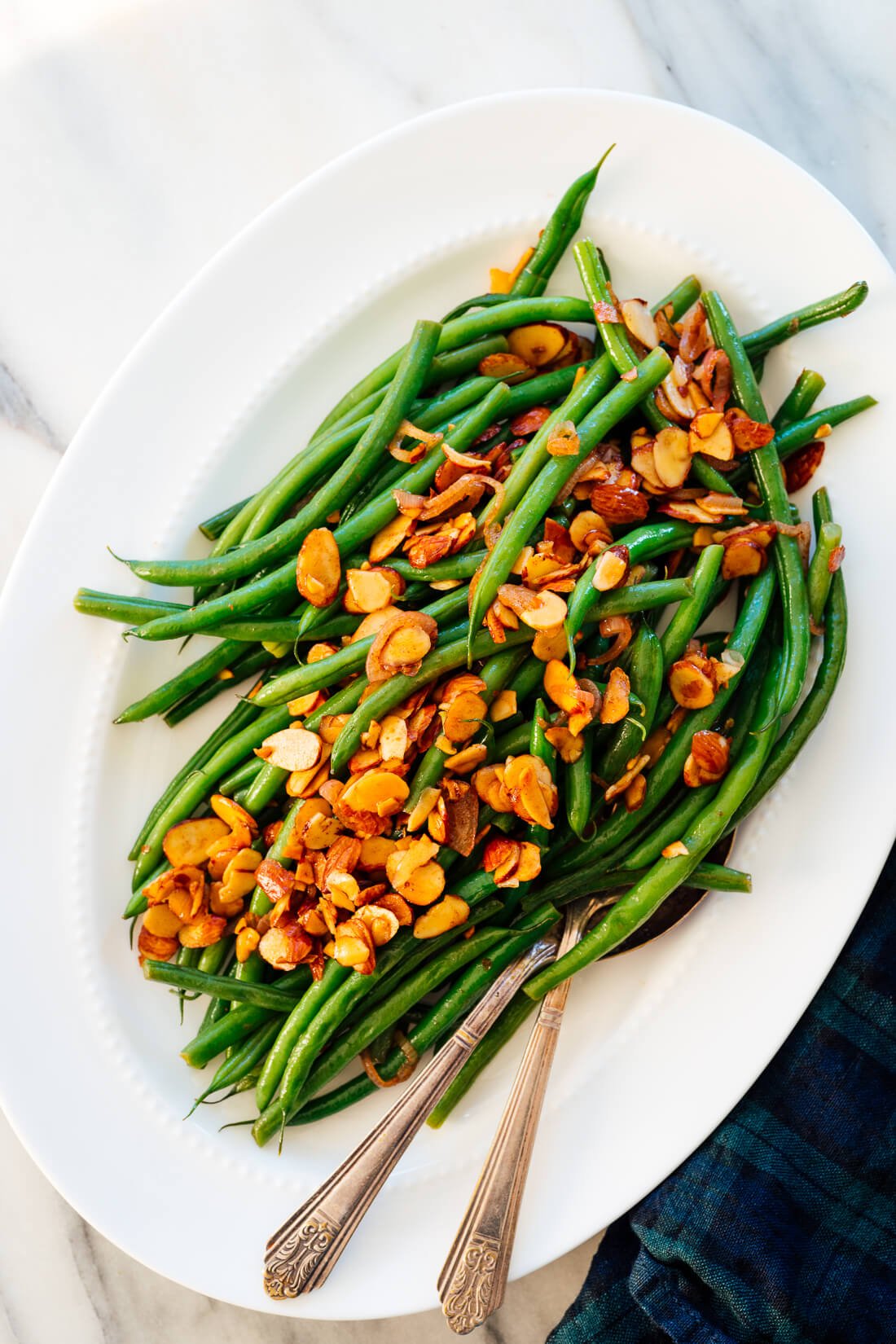
Best Ever Green Beans
From Cookie & Kate
Earlier this week, I asked my mom how she likes to cook green beans. She replied, “We just eat them.” If you also like to cook green beans simply, but you want to give them a little something extra, try making this Green Beans Amandine recipe. The beans are tossed with a buttery, lemony sauce and plenty of toasted almonds.
.
.

Grilled Corn on the Cob
From Love & Lemons
No grill? Steam or boil your corn instead.
Week #9, Eggplant
- On: July 14, 2021
 0
0
Vegetable of the Week: Eggplant
You could build a strong argument for broccoli as the vegetable of this week. You’ll know what I mean once you unpack your box. Nonetheless, we have a thrilling first eggplant harvest to share this week. The plants are healthy and mostly free of bugs. It’s a revelation what these plants can do under good conditions. We’re still suffering drought here at our farm, but the eggplant are in a fields that’s easy to water.
Preparation
For best flavor, store eggplants at room temperature for 2 – 3 days. If holding for longer than three days, store in the warmest part of your refrigerator. Eggplants do not store well for long periods of time. Many recipes instruct you to salt and drain eggplant “to remove bitter flavors.” Eggplant this fresh is not bitter! You can skip the salting step.
There are many ways to use versatile eggplants. Here are a few ideas:
– Roast in the oven or over coals to cook and smoke your eggplant, then transform into baba ganouj with lemon, tahini, salt and garlic.
– Cut in 1/2 to 3/4 inch slices, peel, and rub with a little salad dressing (I use Newman’s balsamic dressing), then grill slowly until soft and smoky. At this point, you can cut into cubes to make eggplant caponata with chopped tomatoes, onion, garlic, olives, capers, olive oil and red wine vinegar.
– Use the grilled cubes in casseroles or to top pizza.
– Add thin, grilled eggplant slices in grilled cheese sandwiches. Use hearty bread – this doesn’t work well with soft sandwich bread.
– Deb has some very appealing eggplant ideas this week. See below.
Veggie List & Veggie Notes
Week #9; July 15/16, 2021
– Weekly shares
– EOW/ purple
– Sampler/ moon
Broccoli, 2 – 2.75 lb
Carrots, 2 lb
Cucumbers, ~4
Eggplant, 1 large
Fennel with fronds, 1 or 2 bulbs
Kale, 1 bunch
Green bell pepper, 1 small
Zucchini &/or summer squash, almost 2 lb
Walla Walla onion, 1 or 2
Basil, 1 husky sprig.
Some sites get a sunflower this week.
Next week’s box will probably contain sweet corn, carrots, green beans, cucumbers, Walla Walla onion and more.
Carrots – This is the first carrot harvest of the season! These are quite nice, a variety called ‘Romance’ that’s well-adapted for summer production.
Cucumbers – The cuke field is growing well right now, so we can send enough for a substantial cucumber salad.
Fennel (bulbs and lacy fronds) – Fennel is a ‘swing vegetable’; it can be used raw or cooked. Clean well and slice as thinly as possible for use in raw salads. It is good simply prepared with olive oil, lime or lemon juice, salt and shaved parmesan cheese. Cooking softens and sweetens fennel, and mellows its anise flavor. Both the bulb and leaves are edible. Here are ideas from Alice Water of Chez Panisse about how to use fennel: ‘It’s strong anise characteristic seems to suit fish particularly well. … We use fennel all the time. We add the feathery leaves to marinades for fish and to numerous salads, sauces and soups and we use them as a garnish, too. … The bulbs are sliced and served raw in salads in various combinations with other vegetables, parboiled for pastas; caramelized and served as a side dish; braised whole; or cooked in vegetable broths & fish stocks.”
Kale – Most sites get green kale (big, ruffled leaves) but two sites get lacinato kale (dark green leaves with a dimpled surface). They can be used interchangeably.
Storage: Cover and refrigerate.
Green bell pepper – Another first harvest!
Zucchini & summer squash – Storage: Zucchini and summer squash need refrigeration but do not do well at very cold temperatures, as they will soften and form pits in their surface. Refrigerate these squash but in the warmest part of your fridge.
Basil (branched, leafy stalk) – Everyone gets one husky sprig.
Storage: Basil deteriorates if stored in the refrigerator. It is best stored at room temperature with the cut ends in water, for example in a jar or vase. Treat it like a flower. Give the stem a fresh trim and change the water every day or two.
Sunflower (for 1 or 2 sites this week) – This cheerful variety ‘Vincent’s Choice’ does not produce pollen, making it an excellent choice to pack with vegetables. The sunflowers are for beauty and joy, not to eat!
Storage: Trim the stem and place in water. If you re-trim the stem and change the water a few times, the flower should last about one week.
Pro tip: Do not put your basil and sunflower in the same jar of water. That would shorten the life of your basil.
RECIPES from DEB
Visit our 2020 Recipe Log or our 2019 Recipe Log or join our Facebook discussion group.
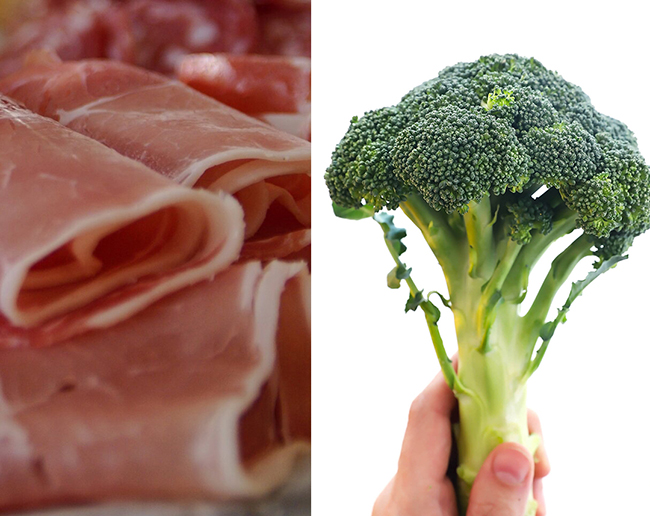
Ham (or not-ham) & Broccoli Rollups with Cheese Sauce
Serves 4-6
Takes about 30 minutes to prepare (a little longer if using brown rice) and 30 minutes to bake
Ingredients:
1 cup of white or brown rice
2 tablespoons butter
a handful of chopped parsley or other herbs (optional)
2 large stalks of broccoli, about 1 1/2 pounds
1 pound sliced deli ham, or smoked turkey
2 1/2 cups milk, skim, 2%, or whole will all work here, warmed slightly
1/4 cup all-purpose flour
salt & freshly ground black pepper
a few grates of nutmeg, or 1/4 teaspoon ground
1 teaspoon dry mustard, or a heaping teaspoon prepared mustard
2 1/2 cups (about 1/2 pound) shredded cheese – sharp cheddar, or combos are good – some cheddar, some Swiss, etc.
1/2 cup grated fresh Parmesan cheese
about 3/4 cup fresh bread crumbs
1 tablespoon butter
Heat the oven to 350°
Cook the rice in the recommended amount of water – about 1 1/2 cups for white, and closer to 2 cups for brown. When the rice is done, remove the cover and add the butter and parsley, if using. Recover and let stand for about 5 minutes, then toss with a fork to combine. Spread the rice in a buttered 2-quart casserole.
Cut the broccoli into trees, and either steam or blanch in boiling water until it’s partially cooked and gives easily when pierced with a fork, but still bright green. Drain, run some cold water over to stop the cooking, and drain again.
Roll up each broccoli tree in a ham slice and arrange in a single layer on top of the rice.
Make the cheese sauce: Place the flour in a heavy bottomed pot, and whisk in the warm milk. Cook over medium heat until the sauce bubbles and thickens, then add the salt & pepper, nutmeg, and mustard. Remove from the heat and whisk in the cheese, and half the Parmesan cheese, saving the rest for topping.
Melt the 1 tablespoon butter in the pot you used to cook the macaroni, and toss the bread crumbs in it.
Pour the cheese sauce over the broccoli rolls and rice (you may not need it all; it freezes well). Top with the buttered bread crumbs and remaining Parmesan cheese, and bake for abut 30 minutes until browned and bubbling.
.
.
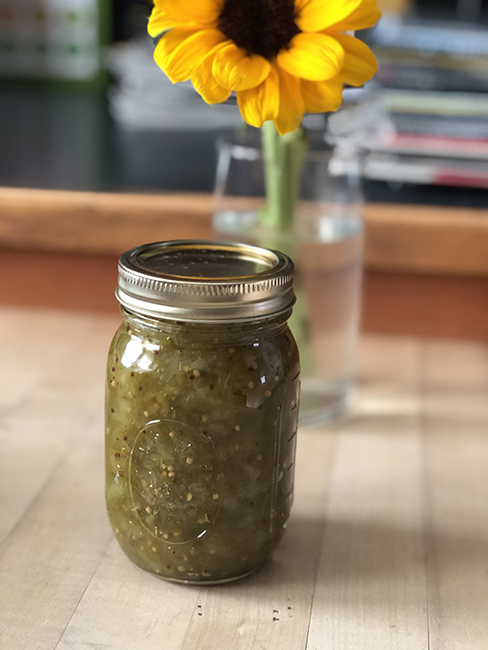
Small-batch Refrigerator Pickle Relish
Based on Serious Eats Sweet and Spicy Pickle Relish
Takes about 45 minutes
Makes one pint
This is a small batch of refrigerator pickle relish that you could make with vegetables in this week’s box. If you want to make more, and can it, see Serious Eats for larger amounts and canning instructions.
one grated green pepper (about 3/4 cup)
1 1/2 cups grated cucumber (about 2 cukes)
1/2 cup minced or grated onion
1 cup apple cider vinegar, divided
1/2 cup granulated sugar
2 teaspoons kosher salt
2 teaspoons yellow mustard seeds
1/4 teaspoon celery seed
generous pinch of red chili flakes
Combine the green pepper, cucumber, and onion in a non-reactive (not aluminum) pot that’s at least 6 quarts. Stir in 1/2 cup of apple cider vinegar and bring to a boil. Reduce the heat, and simmer, stirring occasionally, until the vegetables have cooked down and the liquid is reduced by about 1/3, 20-30 minutes. Drain the vegetables, discard liquid, and return vegetables to the pot.
Add remaining vinegar, sugar and the spices. Bring to a boil and cook for five minutes. Remove pot from heat, and transfer the relish to a clean one-pint jar. Chill overnight before eating. Keeps refrigerated for at least 6 months.
.
.
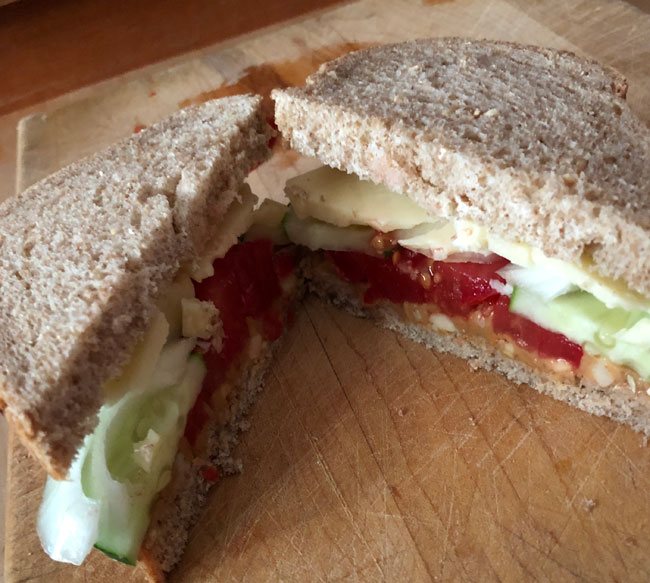
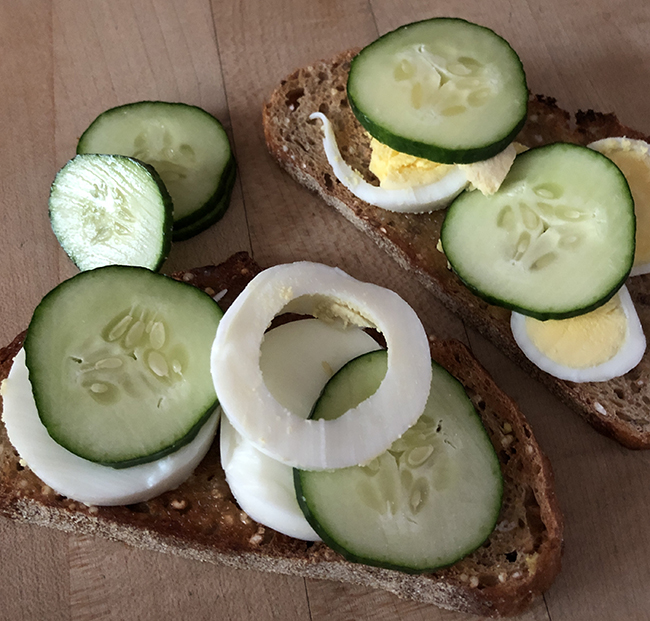
A few sandwich ideas for your cucumbers
Top, Diane’s Dad’s Summer Sandwich, the winner of an NPR recipe contest in 2013, deliciously combines peanut butter, cheddar cheese, tomatoes, and the cucumbers and sweet onion from the box in a sandwich.
Below, cucumbers and hard-boiled eggs on toast for breakfast.
.
.
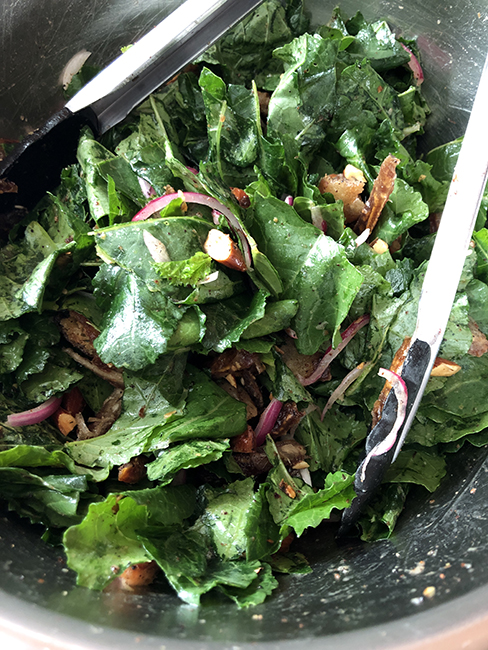
Kale Salad with Almonds, Dates & Toasted Pita
Takes about 30 minutes
Serves 6
Based on Yotam Ottolenghi’s Baby Spinach Salad With Dates and Almonds from Lottie and Doof
1 tablespoon white wine vinegar
1/2 medium red onion, thinly sliced
6-8 pitted Medjool dates, cut into slivers lengthwise
2 tablespoons butter
2-3 tablespoons olive oil
2 small pitas, torn into bite-size pieces
1/2 cup/75g whole raw almonds, coarsely chopped
2 teaspoons sumac (available at Penzey’s Spices)
good pinch red pepper flakes
1 bunch kale rinsed and spun dry and torn into pieces
2 tablespoons squeezed lemon juice
kosher salt & freshly ground black pepper
Combine the vinegar, onion, and dates in a small bowl. Add a pinch of salt, mix, and let marinate for about 20 minutes.
Melt the butter and 2 tablespoons of the olive oil in a medium frying pan over medium heat. Add almonds and cook, stirring until they’re starting to smell toasty, about 5 minutes, and then add the pita and keep cooking and stirring until the pita is crunchy and browned. Remove from the heat and mix in the sumac, red pepper flakes, and another pinch of salt.
To serve the salad, place the kale in a large bowl and toss with the pita-almond mixture and the dates and red onion, the remaining tablespoon olive oil, and lemon juice. Taste and add more salt and pepper if desired.
.
.
 Photo by Deb Perelman/Smitten Kitchen
Photo by Deb Perelman/Smitten Kitchen
Perfect Vegetable Lasagna
From Smitten Kitchen by way of Splendid Table – the original version at Smitten has more step-by-step photos; Splendid Table’s reprint has fewer ads.
This recipe is perfect for using a lot of the vegetables from this weeks box: eggplant, fennel, kale, bell pepper, basil – you can even make a double batch, one to freeze.
.
.
Broccoli Pesto & Fusilli Pasta Recipe
From 101 Cookbooks
Here’s a switch – use broccoli for pesto. In addition to eating the pesto on pasta, Heidi suggests thinning to make a salad dressing, mixing into soups, or stir into yogurts or fresh cheeses.
.
.
Deborah Madison’s Shaved Fennel Salad with Celery and Egg
From The Wednesday Chef
In cold weather I love a fennel gratin, but this cool salad seems more appropriate for summer!
.
.
Spicy Braised Eggplant Noodles Recipe
From Bon Appétit
The authors of this recipe from Bon Appétit suggest it for a quick weeknight supper.
.
.
Roasted Carrots & Fennel
From Taste of Home
Roasting the lemon along with the vegetables adds a wonderful flavor.
.
Week #8; A date on the tractor.
- On: July 07, 2021
 0
0
These days, it’s rare for me and Steve to do field work together. Our responsibilities pull us in different directions. Of course, we talk endlessly about the farm (and about you!) at the dinner table. At this busy time of year, we often race to stay ahead of our crew. This week, we did not have long to prep a field before our crew was ready to transplant watermelons, so Steve & I worked together to speed the job. It felt like a date!

We use this implement to shape beds for transplanting and to lay plastic mulch.


Steve drives the tractor because he’s skilled at driving in a straight row. Straight rows make the next jobs of transplanting and cultivation easier. Meanwhile, I perch on the back seat, ready to jump off at the end of each row to cut the plastic mulch and drip tape, reposition both in the next row, and cover the ends with soil.


The crew was ready with the transplanter and a wagon of watermelon seedlings. They started transplanting in the first bed while we were still laying mulch.

Eventually, the melon plants will completely cover the ground, as you see in this photo of a more mature field. At that point, we cannot cultivate or even weed by hand without damaging the vines. Now you see why plastic mulch is helpful in this setting.
We’ve tried paper mulches but have not found one that lasts long enough to be useful. Paper breaks down quickly under sunshine and moisture. New products continue to be released, so we’re hopeful that some day we can switch from plastic mulch to paper or plant-based mulch.
Thanks for reading.
Beth
Veggie List & Veggie Notes
Week #8; July 7/8, 2021
– Weekly shares
– EOW/ green

Pretty Swiss chard ready to pack in CSA boxes
Caraflex cabbage
Swiss chard, 1 bunch
Zucchini &/or yellow squash, ~3 lb
Snap & snow peas, 0.7 lb
(Both types of peas are in one bag.)
Broccoli, 1 – 3 heads
Cucumber, 2
Lettuce, 1 small head
Walla Walla onion, 1
Basil, 1 husky sprig
Garlic scapes, 1 small handful
One or two sites get a sunflower this week.
Next week’s box will probably contain broccoli, zucchini, cucumbers, fennel, carrots, basil, Walla Walla onion and more.
Caraflex cabbage (pointed head) – This is another head of the tender salad-type cabbage we sent last week. These heads average 2 lb, not too big. It’s so good right now that we’re sending it two weeks in a row, so each EOW group gets it. We’ve got a batch of cole slaw in the fridge right now!
Swiss chard (pretty bundle of green leaves) – Our crew did a nice job mixing colors for pretty bunches. Swiss chard is a close relative of spinach, but requires a bit more cooking. Use as a substitute in any recipe that calls for spinach, just cook the chard a little longer. Both stems and leaves are delicious. The stems requite longer cooking, so cut them free from the leaves when preparing. That lets you cook the stems longer.
Snap & snow peas – As usual, both types are in one bag, with snow peas on the bottom this time (so far at least!). We really like this new snap pea variety, PLS140. Long pods, sturdy plants and good flavor despite the heat. Hot weather is always a challenge for peas. Enjoy this batch – it’s the final planting for the year.
Broccoli – We remain amazed by the broccoli this year. This is much bigger than our usual broccoli planted in spring.
Cucumbers – The cukes have a lot of scarring this week from insects and wind. You might need to peel your cuke(s) this week.
Walla Walla onions – These fat onions are sweet, crisp and very mild. Wonderful raw or lightly cooked. Try cutting into wedges, threading on a skewer and grilling. Do not try to fry these onions – it doesn’t work because of their high water content.
Storage: It’s OK to store at room temperature for up to one week. Otherwise, refrigerate.
Basil (branched, leafy stalk) – Everyone gets a husky sprig, the first cutting of the season.
Storage: Basil deteriorates if stored in the refrigerator. It is best stored at room temperature with the cut ends in water, for example in a jar or vase. Treat it like a flower. Give the stem a fresh trim and change the water every day or two.
Basil forecast: We think this will be a good basil year. Keep your fingers crossed. We’ve settled on a favorite disease-resistant variety, to avoid the disease that has ended our basil crops early the past few years. I think we’ll have a steady supply during tomato season, and plenty to sell to members who want extra basil for pesto.
Garlic scapes (curly green things) – Garlic scapes grow at the top of garlic plants. They look like flower buds but are actually clusters of tiny bulblets. We snap off the young scapes to direct the plants’ energy into forming garlic bulbs underground. Use scapes as a substitute for garlic cloves. They can be minced, mixed with olive oil, and added to stir fries or simple pasta dishes. The scapes can be sautéed, but will not brown like garlic cloves. Expect them to retain their crunch even when cooked, and to be milder than garlic cloves, closer in pungency to the green garlic we’ve sent.
Sunflower (for 1 or 2 sites this week) – We continue experimenting with sunflowers as they are one of the few flowers that we can send in the CSA boxes. This cheerful variety ‘Vincent’s Choice’ does not produce pollen, making it an excellent choice to pack with vegetables. The sunflowers are for beauty and joy, not to eat!
Storage: Trim the stem and place in water. If you re-trim the stem and change the water a few times, the flower should last about one week.
RECIPES from PHOEBE
Visit our 2020 Recipe Log or our 2019 Recipe Log.
.
.

Zucchini Fritters with Lemon Yogurt Sauce
These fritters are a delicious appetizer, or, if they’re paired with a salad, a yummy meal on their own. They’re best served right after cooking, when they’re still warm and crispy. The fritter recipe is adapted from Julia Turshen’s.
Serves: 3-4
Prep time: 20 minutes
Cook time: 20 minutes
Ingredients
For the yogurt sauce:
1/2 cup plain Greek yogurt
1 teaspoon minced garlic scapes
1 teaspoon fresh lemon juice
1/2 teaspoon lemon zest
1/4 teaspoon sea salt
Freshly ground black pepper
1 teaspoon minced fresh basil, about 3 large leaves
For the fritters:
1/2 cup all-purpose flour
1 teaspoon baking powder
1 teaspoon sea salt
1 pound zucchini and/or yellow squash, coarsely grated
1 large egg, beaten
1/2 cup sunflower or vegetable oil, for frying
- Make the yogurt sauce: In a small bowl, stir together the yogurt, garlic scapes, lemon juice, lemon zest, salt, and pepper. Fold in the basil, season to taste, and set aside.
- Make the fritters: In a large bowl, whisk together the flour, baking powder, and salt.
- Place the grated zucchini on a clean kitchen towel and wrap it up tightly. Wring out the liquid over the sink.
- Unwrap the squash and add it to the bowl with the flour mixture. Add the egg and mix until everything is well combined. It will seem stiff and dry at first, but it will come together as you stir.
- Line a plate with paper towels.
- Heat a large nonstick skillet over medium-high heat and add 1/4 cup of the oil. When the oil shimmers, drop in heaping tablespoonfuls of the batter and use the back of a spoon or fork to press each one into a flat pancake. Be careful not to crowd the fritters.
- Cook until the fritters are brown and crisp on both sides, about 2-3 minutes on the first side and about 2 minutes on the second side. Transfer to the lined plate and fry the remaining batter in batches, adding the remaining oil to the skillet as needed.
- Sprinkle the warm fritters with salt and serve with dollops of the lemon yogurt sauce.
Beans & Greens Tacos with Pickled Chard Stems
These tacos have a soft, aromatic beans-and-greens filling, so I like to top them with pickled chard stems for crunch. Note that I only pickle 1 cup of chard stems for this recipe. If you have additional chard stems, you’ll dice them up and cook them with the taco filling.
Serves: 3-4 (makes 8 tacos)
Prep time: 30 minutes
Cook time: 15 minutes
Ingredients
For the pickled chard stems:
1 bunch Swiss chard stems
1 garlic scape, thinly sliced
1/3 cup rice vinegar
1/3 cup white wine vinegar
1 tablespoon cane sugar
1/4 teaspoon sea salt
For the tacos:
1 tablespoon avocado oil
1 onion, thinly sliced
1 teaspoon sea salt, divided
3 garlic scapes, thinly sliced
Remaining diced chard stems
1 (14-ounce) can pinto beans, drained and rinsed
1 1/2 teaspoons ground cumin
1 1/2 teaspoons ground coriander
1/8 teaspoon cayenne pepper
1 bunch Swiss chard leaves, thinly sliced into ribbons
2 tablespoons fresh lime juice
8 tortillas, warmed
1/3 cup crumbled feta cheese
- Make the pickled chard stems: Cut the chard stems into 1-inch matchsticks to yield 1 cup. Dice any remaining chard stems and set aside.
- Place the matchsticks and the garlic scape in a medium jar with a tight-fitting lid. Add the vinegars, sugar, and salt and seal the lid. Shake vigorously until the sugar and salt dissolve. Set aside.
- Make the tacos: Heat the oil in a large skillet over medium heat. Add the onion and 1/4 teaspoon salt and cook for 5 minutes, or until the onion softens. Add the garlic scapes and reserved diced chard stems from above (note: not the pickled ones!) and cook for 3 minutes more.
- Add the beans, cumin, coriander, cayenne, and the remaining 3/4 teaspoon salt, and cook for 1 minute, or until fragrant.
- Add half the chard leaves and 1 tablespoon lime juice and cook, tossing, until the leaves wilt. Add the remaining chard leaves and cook until just wilted. Add the remaining 1 tablespoon lime juice and season to taste.
- Assemble the tacos with the tortillas, beans and chard filling, pickled chard stems, and crumbled feta cheese.
Garlicky Stir-Fried Cabbage with Seared Tofu
If you’re not in the mood for tofu, no worries! This tangy, garlicky cabbage would be a delicious side dish for almost any protein. To make this recipe a larger meal, serve it with cooked rice.
Serves: 4
Prep time: 1 hour and 30 minutes (includes marinating time)
Cook time: 15 minutes
Ingredients
For the tofu:
1/4 cup tamari or soy sauce
2 tablespoons maple syrup
2 tablespoons rice vinegar
1 teaspoon toasted sesame oil
1 teaspoon sriracha
2 garlic cloves, grated
14 ounces extra-firm tofu, sliced into 1-inch-thick triangles
2 teaspoons avocado oil
For the cabbage:
2 tablespoons avocado oil
2 tablespoons thinly sliced garlic (about 8 medium cloves)
2 tablespoons thinly sliced garlic scapes
1/4 teaspoon red pepper flakes
1 small green cabbage, shredded (about 6 cups)
3/4 teaspoon sea salt
2 tablespoons rice vinegar, divided
For serving:
1/4 cup chopped peanuts
1/4 cup torn fresh basil leaves
- Make the tofu marinade: In a small bowl or liquid measuring cup, whisk together the tamari, maple syrup, rice vinegar, sesame oil, sriracha, and garlic.
- Arrange the tofu in a single layer in an 8×8″ baking dish, or similar. Pour the marinade evenly over it, cover, and refrigerate for 1 hour or overnight, flipping partway through the marinating time.
- Make the cabbage: Heat the oil in a large nonstick skillet over medium heat. Add the garlic, garlic scapes, and red pepper flakes and cook, stirring constantly, for 2 minutes. Turn down the heat as needed to avoid burning.
- Add half the cabbage, the salt, and 1 tablespoon of the rice vinegar and toss until the cabbage starts to soften. Add the remaining cabbage and rice vinegar and toss again, cooking until all the cabbage has softened slightly but still has some bite, 3-5 minutes. Transfer the cabbage to a large bowl and set aside while you cook the tofu.
- Wipe out the skillet and return it to medium heat. Add the 2 teaspoons avocado oil. Remove the tofu from the marinade and arrange it with one triangular side down in the skillet. You may need to work in batches depending on the size of your pan. Cook until the tofu is browned and lightly crisp on the first side, about 2 minutes. Flip and cook for 2 minutes more.
- Assemble plates with the cabbage and tofu and garnish with the peanuts and basil.
Spaghetti with Swiss Chard and Garlic Chips from Smitten Kitchen
This garlic-lovers spaghetti is an easy way to use a whole bunch of Swiss chard. Like the taco recipe above, it uses both the stems and the leaves.
.
.

Photo by How Sweet Eats
Make-Ahead Marinated Mediterranean Chickpeas from How Sweet Eats
This recipe is a great one to make ahead for lunches. The cucumber from this week’s box will give it a nice crunch!
.
.

Photo by Smitten Kitchen
Roasted Cabbage with Walnuts and Parmesan from Smitten Kitchen
Roasting is one of my favorite ways to cook cabbage, as it becomes deliciously crisp and browned around the edges. A shower of Parmesan cheese takes these wedges over the top.
.
.

Photo by Jack Mathews
Zucchini Bread from Love & Lemons
This recipe makes two loaves. Devour them both right away, give one to a friend, or freeze one loaf for another day.
.
Week #7; Farm-keeping
- On: June 30, 2021
 0
0
Think housekeeping, but for a farm. There are essential tasks that should not be neglected. We accomplished a lot this week, but without the stress of strawberry picking and u-picks. We pushed ourselves and our crew pretty hard during berry season. It’s the only way to get everything harvested. This week was calm and very productive, with a welcome rainy day on Tuesday.

Remember the tomato field we mulched with straw? Now it’s time to trellis the tomatoes, so the plants are off the ground and easier to pick. Top, Ari winds string around a wooden stake, then weaves the plants in place. Bottom, you can see there’s a string on both sides of the plants. In the background, Billy weaves the adjacent row.

Steve plants carrots for fall harvest!

This earlier carrot field will be ready to harvest in a few weeks. We have cultivated mechanically as much as we can. At this point, we need to weed by hand. This is a good job for a group, so the work is social and progress is quick.
Save the boxes!

There are already big stacks of damaged boxes in the barn. Let’s solve this problem, and avoid the waste. The boxes are expensive and we count on using them many times.

The tabs holding the bottom of the box together are vulnerable to damage as the box is flattened.

Once ripped, the box will not safely hold a heavy cabbage or jar of tomato juice, et.

This is a view of the bottom of the box. When unfolding the tabs on the bottom of the box, it is tempting to grab the edge and pull up. Don’t do it! That will rip the tabs.

Instead, grasp the edge and pull toward yourself. The box will fold at its natural crease. Repeat for the other tab, and the box will be easy to flatten.
Finally, feel free to watch our old video on this topic.
Thank you so much for the extra attention to this.
Beth & Steve
Veggie List & Veggie Notes
Week #7, July 1/2, 2021
– Weekly shares
– EOW/ purple
– Sampler/ sun
Tipi tomato juice, 1 quart
Caraflex cabbage, ~2 lb
Broccoli, ~2.5- 2.75 lb
Snap peas, 0.4 lb
Zucchini &/or yellow squash, a few
Green leaf lettuce, 1 small head
Scallions, 1 bunch
Dillweed, 1 bunch with leaves & flowers
Garlic scapes, a small handful
A few sites get an extra item. These are the first, sparse harvests. We’ll rotate to everyone soon.
– One site gets a sunflower, for beauty and color.
– A few sites get a cucumber. These early cukes are oddly shaped but are very fresh! Soon we’ll have enough for all.
Next week’s box will probably contain summer vegetables! We’re not sure which ones yet!
Tipi tomato juice – At peak season most years, we take our tomatoes to a small batch processor in East Troy, to process into tomato juice. It’s a great way to capture ripe tomatoes when abundant. Drink the juice or try making an easy soup with vegetables from your CSA box, with zucchini, scallions, and dill (if you like dill). Or make holiday cocktails!
Storage: Store the juice out of sunlight at room temperature when unopened. Refrigerate after opening. The juice is already seasoned so do not add salt if you cook with it.
Ingredients: organic tomatoes from Tipi Produce, salt, organic garlic, organic onion, organic black pepper. Nutritional information is posted here.
‘Caraflex’ cabbage – This is a nice salad-type that we grow in summer. Don’t you love the pointy shape? It has thinner, more tender leaves than the usual green cabbage. Great in salads and slaws but can also be cooked. Here’s the description from the seed catalogue: “Inner leaves are tender, crunchy, and have an excellent, sweet and mild cabbage flavor. Perfect for summer salads, slaws, or cooked dishes.” We’re sending it this week so you can make slaw for your holiday picnics.
Broccoli – Wow, for our farm, this is great spring broccoli! Most years, we struggle to grow broccoli in spring (fall is easier). It reflects our light-textured soils. Clearly, the broccoli plants were very happy with year.
Scallions – This is the last batch of scallions until fall. We hope you enjoyed them.
Garlic scapes (curly green things) – Garlic scapes grow at the top of garlic plants. They look like flower buds but are actually clusters of tiny bulblets. We snap off the young scapes to direct the plants’ energy into forming garlic bulbs underground. Use scapes as a substitute for garlic cloves. They can be minced, mixed with olive oil, and added to stir fries or simple pasta dishes. The scapes can be sautéed, but will not brown like garlic cloves. Expect them to retain their crunch even when cooked, and to be milder than garlic cloves, closer in pungency to the green garlic we’ve sent.
RECIPES from DEB
Visit our 2020 Recipe Log or our 2019 Recipe Log or join our Facebook discussion group.
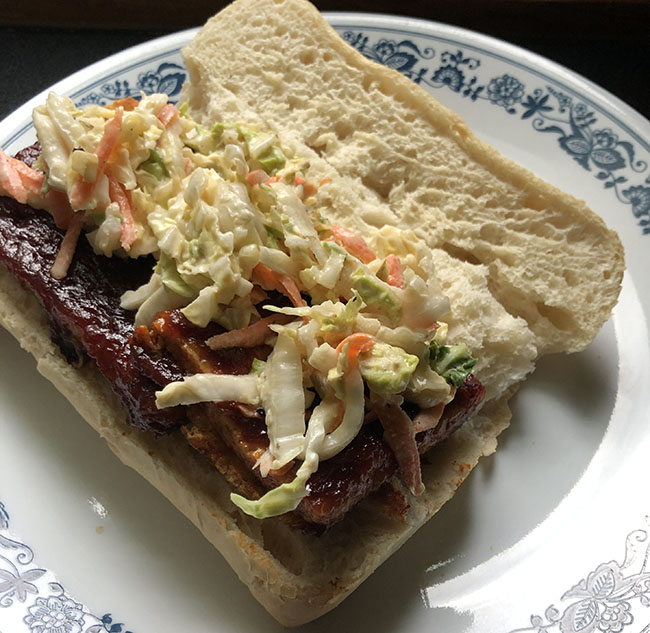
Quick BBQ tofu or chicken sandwiches with slaw
Serves 4
Tofu/chicken takes 30 minutes prep, and 30 minutes baking
Slaw takes 15 minutes prep, 1-3 hours wilting, 1 hour or more chilling
Tofu or chicken and sauce
(you can make this even quicker by skipping the sauce ingredients, and covering the tofu or chicken with about a cup of your favorite bottled barbecue sauce):
one 16 oz. package of firm tofu (such as Bountiful Bean, made in WI) OR 16 oz. skinless boneless chicken breast
3-4 tablespoons vegetable oil, divided
about 3 tablespoons flour for dredging
2 tablespoons rice vinegar
3 TBLS soy sauce
1 8 oz. can of tomato sauce
1 large chipotle chile in adobo (or more if you like heat; these also come in cans)
2 tablespoons maple syrup
2 tablespoons molasses
2 teaspoon cumin
1 reaspoon dried oregano
pinch red pepper flakes
1 teaspoon chili powder
1 teaspoon paprika
4 soft French rolls
mustard & coleslaw for serving
Coleslaw:
6 cups shredded cabbage
1 carrot grated
1/4 cup sugar
1 teaspoon kosher salt
1/4 cup mayonnaise or vegan mayonnaise
juice of one large lemon or 3 tablespoons cider or rice vinegar
freshly ground black pepper
optional: 1/2 teaspoon celery seed
Preheat the oven to 350°. Squeeze some of the water out of the block of tofu, halve the block, and cut the halves into slices – you should get 4 slices per half. Dredge the tofu in flour, heat about a tablespoon of the oil in a large skillet, and fry the tofu in batches turning once until it is browned on both sides, adding more oil as necessary.
If you are using chicken, cut each breast into 3 or 4 pieces, then pound with a meat mallet until flattened to about an inch thick. Dredge in flour and fry following the same directions as for the tofu.
For sauce, combine one tablespoon of the oil, the rice vinegar, soy sauce, tomato sauce, chipotle chile, maple syrup, molasses, cumin, oregano, red pepper flakes, chili powder, paprika, and salt & pepper to taste in a food processor or blender jar, and whir until smooth. Pour enough of this sauce to cover the bottom of a one to two quart baking dish, and transfer the tofu or chicken into the dish as it’s fried. When you get all the tofu or chicken into the dish, pour in the rest of the sauce from the blender.
Cover the baking dish with foil, and bake for about 30 minutes, until all the sauce is absorbed.
Warm the buns, spread with mustard if desired, and make sandwiches with the tofu or chicken, and top with coleslaw.
For the coleslaw: In a large bowl, toss the shredded cabbage & grated carrot with the sugar and kosher salt. Transfer the cabbage mix to a colander – it helps to do this in the sink! – and set the colander inside the bowl. Let the coleslaw wilt for at least 1 hour and up to three. Lift the cabbage and colander out of the bowl, discard the liquid, and rinse and dry the bowl. Put the cabbage mixture back into the bowl and add the mayo, lemon juice, black pepper and celery seed if using and mix well. Chill the coleslaw for an hour before serving.
For coleslaw lovers, here are some additional coleslaw variations.
.
.
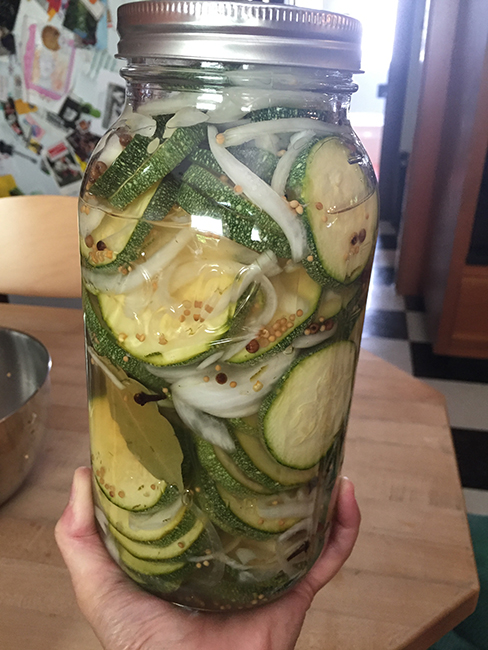
Refrigerator Zucchini Pickles
Makes 2-3 pints of pickles
Takes about 30 minutes prep, marinate at least overnight before serving
These are refrigerator pickles, not intended for canning, and are similar in sweetness to a bread & butter pickle. For those with access to Local Thyme, Pat offers Sweet Zucchini Pickles which includes turmeric, to give the pickles the traditional bread & butter pickle yellow color.
Equipment: 2-3 pint jars, or one 2 quart jar
1 1/2 pounds zucchini, rinsed, ends trimmed, and sliced into rounds
1 onion, peeled and halved and sliced into half moons
1-2 tablespoon mixed pickling spices (or make your own blend of mustard seeds, bay leaf, peppercorns)
2-3 whole garlic cloves, peeled – or cut garlic scapes from the box into lengths that will fit into your jars
1-2 dried hot red pepper (optional)
sprigs of fresh dill
1 cup vinegar, white or cider
1 tablespoon kosher salt
1/2 cup sugar
about 2 1/2 cups water
Divide the zucchini and onion slices into your jars, and add the pickling spices, garlic, and red pepper if using. Tuck in the sprigs of dill. Combine the vinegar, kosher salt, sugar, and water in a saucepan, and bring to a boil, stirring to dissolve the salt and sugar. Pour over the vegetables while still hot. Seal the jars with lids, and chill at least overnight before eating. Delicious on cheese sandwiches!
.
.
Master roasted broccoli recipe
Serves 4
Takes 20 minutes
1 3/4 pounds broccoli
3 tablespoons olive oil
pinch of kosher salt or 1/2 teaspoon table salt
1/2 teaspoon sugar
plenty of ground black pepper
Heat the oven to 400°. Oil a large baking sheet with 1/2 to 1 tablespoon of the oil, and place it in the oven to heat. Rinse the broccoli, and cut the heads away from the stalks. Separate the heads into florets. Peel the stalks, and slice into rounds. In a large bowl, toss the broccoli with the remaining oil, salt, and sugar. Transfer to the heated baking sheet and roast for until tender and well browned, abut 10 minutes. Serve with lemon wedges if desired.
.
.
Here’s a three-pack of broccoli salads for you to choose from for holiday picnics!
Charred Broccoli and Avocado Salad
From Chocolate & Zucchini
cnz.to/recipes/vegetables-grains/charred-broccoli-and-avocado-salad-recipe/
A vegan option with a creamy tahini dressing.
.
.
Favorite Broccoli Salad
From Cookie and Kate
cookieandkate.com/favorite-broccoli-salad-recipe/
Another no-mayo version, with a honey-mustard dressing and dried cranberries
.
.
Broccoli Salad with Bacon, Cheddar & Almonds
From Once Upon a Chef.
www.onceuponachef.com/recipes/creamy-broccoli-salad-with-bacon-cheddar-almonds.html
This is the version most of us have encountered at potlucks, with bacon and a sweet mayonnaise-based dressing. You can sub sunflower seeds for the almonds.
.
.
Fettuccine with Walnuts, Zucchini Ribbons, and Pecorino Romano
From Bon Appetit
www.bonappetit.com/recipe/fettuccine-with-walnuts-zucchini-ribbons-and-pecorino-romano
Sub in the fresh dill from the box for the basil and mint called for here.
Week #6; Strawberry U-Pick
- On: June 23, 2021
 0
0

We were pleased with how many kids came to the u-pick this year. We placed limits on how many berries each family could pick but that did not interfere with having a fun day at the farm.

Look at this stylish baby, dressed in a strawberry shirt!
For those who missed our berry u-picks, the next farm events will be tomato u-pick(s) later in the summer, then our fall gleaning and pumpkin u-pick. Let’s discuss the berry u-picks, now that they are over.
We hope to have berries for everyone next year. Most years, we have enough u-pick berries for all the members who want them. Yields were low this year, due to frost and because we’re down to five beds instead of seven. Next year’s harvests will come from a new field. It’s already planted and looking good.
We like the reservation system. It was essential during the pandemic and useful this year while berries were in short supply. We plan to continue with reservations for the rest of 2021, then will reevaluate next year. We realize not everyone was happy with the limits on picking, but we chose to prioritize offering u-pick to as many households as possible, over fewer people getting more berries. Sharing is always the right decision!
Tell us your thoughts. If you have suggestions or feedback on the u-picks, send us an email.
Reminder; July 1 payments
Many of you chose to pay in three installments. The final installment is July 1. If you chose to pay by credit card, the charge will be automatic. I’ll deposit July 1 checks during the first week of July.
Better weed control than ever

A freshly cultivated and weeded celeriac field. The leeks at right are next. Both crops are in the field all season. Keeping them healthy and weeded in spring will double our yields later.
We’ve worked very hard on weed control this spring. Steve and I decided to hire slightly more staff (per acre) than usual, in hopes of getting our early weeding done on time. Time invested in June will pay off the entire season. So far, it’s working. The dry weather helps enormously.

Top; Steve chops large bales of straw directly over a field of pepper plants.
Bottom, our crew spreads the straw to cover the ground and edges, but not the plants. From left, Karen, Matt, Anna, Ari, Zoe, and Billy.
We’re experimenting with mulching our tomato and pepper fields with straw. We’ve tried this before with rotted leaves, but the leaves broke down too quickly and weeds took over. The straw will persist longer. We think covering the soil and controlling weeds will help with disease and insect problems on these crops. We’ll see. The straw and extra labor are new expenses, but we hope the early efforts will pay off later with healthy crops.
Beth
Veggie List & Veggie Notes
Week #6, June 24/25, 2021
– Weekly shares
– EOW/ green
Strawberries, 1 pint
Fennel, 1 or 2 bulbs with fronds
Broccoli, 1 – 2 heads, ~2/3 to 1 lb total
Snow peas, 0.6 lb
Snap peas, 0.75 lb
(Both peas are in one bag.)
Collard greens, 1 medium bunch
Zucchini &/or yellow squash, a few
Lettuce, iceberg or red leaf
Scallions, 1 bunch
Next week’s box will probably contain Caraflex cabbage, broccoli, zucchini/squash, scallions, and more.
Strawberries – Berries are perishable. Refrigerate and eat soon.
Fennel (bulbs and lacy fronds) – Fennel is a ‘swing vegetable’; it can be used raw or cooked. Clean well and slice as thinly as possible for use in raw salads. It is good simply prepared with olive oil, lime or lemon juice, salt and shaved parmesan cheese. Cooking softens and sweetens fennel, and mellows its anise flavor. Both the bulb and leaves are edible. Here are ideas from Alice Water of Chez Panisse about how to use fennel: ‘It’s strong anise characteristic seems to suit fish particularly well. … We use fennel all the time. We add the feathery leaves to marinades for fish and to numerous salads, sauces and soups and we use them as a garnish, too. … The bulbs are sliced and served raw in salads in various combinations with other vegetables, parboiled for pastas; caramelized and served as a side dish; braised whole; or cooked in vegetable broths & fish stocks.”
Snap peas and snow peas. Both types have strings to remove. Snap off the stem end and pull the string down the concave side of the pod (the inward-curing side). Throw away the string and eat the pod. The thicker pea pods will usually have a string along both edges. Remove them when you snap off the stem.
– Snap peas (plump pea pods) – These peas should be eaten pod and all. They are delicious raw, or very lightly cooked or stir-fried. Preparation: They will need a quick rinse to remove faded gray blossoms. Storage: Refrigerate.
– Snow peas (larger, flatter pea pods) – These are excellent stir fried or in raw salads.
Zucchini & summer squash – Zucchini and summer squash need refrigeration but do not do well at very cold temperatures, as they will soften and form pits in their surface. Refrigerate these squash but in the warmest part of your fridge. These early squash are still rather lumpy because of incomplete pollination. This happens every year.
Collard greens (modest bunch of flat green leaves) – Oh, these are nice right now; young and tender.
Storage: Cover and refrigerate.
RECIPES from PHOEBE
Visit our 2020 Recipe Log or our 2019 Recipe Log or join our Facebook discussion group.
Cold Peanut Noodles with Snow Peas and Scallions
Make this recipe gluten-free by using 100% buckwheat soba noodles and tamari instead of soy sauce.
Serves 2-4
Prep time: 20 minutes
Cook time: 11 minutes
Ingredients
For the peanut sauce:
1/4 cup natural creamy peanut butter
1 1/2 tablespoons tamari or soy sauce
1 tablespoon rice vinegar
2 teaspoons honey
1 teaspoon toasted sesame oil
1/4 teaspoon ground ginger
1-2 tablespoons water
For the noodles:
1/2 cup frozen shelled edamame
6 oz snow or snap peas, sliced in half on the bias
5 oz soba noodles (or 2 bundles from an 8 oz package)
1-2 scallions, thinly sliced on the bias
Crushed peanuts, for serving
Sriracha, for serving
- Make the peanut sauce: In a small bowl, stir together the peanut butter, tamari, rice vinegar, honey, sesame oil, and ginger. Add water, 1 tablespoon at a time, to thin the sauce to your desired consistency. Set aside.
- Bring a pot of salted water to a boil and place a large bowl of ice water nearby. Drop the edamame into the boiling water and blanch for 3 minutes. Add the snow peas to the pot and cook for 1 minute more, until all the vegetables are tender, but still bright green. Drain and transfer to the ice bath to stop the cooking process. Let chill for 2 minutes. Drain the vegetables and transfer them to a kitchen towel to dry. Wipe out the bowl and set aside.
- Bring a pot of unsalted water to a boil, and cook the soba noodles according to the package directions. Drain and rinse under cool water. Toss with a drizzle of sesame oil to prevent sticking.
- Add the noodles, edamame, and snow peas to the large bowl and toss with the peanut sauce. Season to taste with more tamari, sesame oil, and rice vinegar as desired.
- Divide the noodles among plates or bowls and top with the scallions, crushed peanuts, and drizzles of sriracha.
Shaved Fennel and Snap Pea Salad with Cherries and Lemon
You can toast the sunflower seeds on the stove or in the oven for this recipe – whichever you prefer. To toast them on the stove, add them to a small, dry skillet over low heat and cook, stirring often, until fragrant. Otherwise, preheat the oven to 350°F. Spread the sunflower seeds in single layer on a baking sheet and toast for 5 minutes. Transfer to a separate plate or bowl to cool.
Serves 4
Prep time: 20 minutes
Cook time: 2 minutes
Ingredients
3 scallions
2 tablespoons extra-virgin olive oil
2 tablespoons fresh lemon juice
1 1/2 teaspoons lemon zest
1/2 teaspoon sea salt
1 fennel bulb, sliced paper-thin
8 oz snap or snow peas
1/4 cup tender fennel fronds, roughly chopped
1/4 cup toasted sunflower seeds
2 tablespoons dried tart cherries
Freshly ground black pepper
- Use a sharp knife to thinly slice the scallions on the bias. Place them in a bowl of ice water to chill for 15 minutes.
- In a large bowl, whisk together the olive oil, lemon juice and zest, and salt. Add the shaved fennel and toss to coat. Set it aside to marinate while you prep the remaining ingredients.
- Bring a large pot of salted water to a boil. Meanwhile, use a slotted spoon to scoop the scallions out of the ice water and onto a kitchen towel to dry. Reserve the bowl of ice water.
- Drop the snap peas into the boiling water and blanch for 1-2 minutes, or until tender but still bright green. Drain and transfer to the ice water to stop the cooking process. Let chill for 2 minutes, then drain and transfer to a kitchen towel to dry.
- Slice the blanched snap peas in half on the bias. Add them to the bowl with the fennel along with the scallions, fennel fronds, sunflower seeds, dried cherries, and several grinds of pepper. Toss to combine, season to taste, and serve.
Double Fennel Pasta with Parmesan and Garlic
Serve this pasta as-is, or top it off with toasted breadcrumbs or pine nuts for crunch! Red pepper flakes would be delicious here too.
Serves 4
Prep time: 15 minutes
Cook time: 30 minutes
Ingredients
1/4 cup extra-virgin olive oil
8 garlic cloves, thinly sliced
1 fennel bulb, thinly sliced
12 oz spaghetti or linguine pasta
2 tablespoons white wine vinegar, divided
1/4 teaspoon sea salt, more to taste
1 cup freshly grated Parmesan cheese, more for serving
1 cup tender fennel fronds, roughly chopped
Freshly ground black pepper
- Bring a large pot of salted water to a boil.
- Add the olive oil to a large skillet over medium heat. When it shimmers, add the garlic and cook, stirring often, until it begins to brown around the edges, 3-5 minutes. Reduce the heat as necessary to avoid burning. Use a slotted spoon to scoop the garlic out of the skillet, leaving the oil behind. Set the garlic aside.
- Add the fennel and a generous pinch of salt to the skillet and cook, stirring occasionally, until it is very soft and beginning to brown, 10-15 minutes.
- Meanwhile, cook the pasta. Drop the pasta into the boiling water and cook until al dente, following the package instructions. 2 minutes before the pasta is ready, scoop 3/4 cup of the starchy pasta water out of the pot and set aside. Drain the pasta and toss with a drizzle of olive oil to prevent sticking.
- When the fennel is tender, stir 1 tablespoon of the white wine vinegar into the skillet. Cook for 30 seconds. Add the pasta and toss to coat. Sprinkle the salt and half the Parmesan cheese over the pasta. Pour in half the reserved pasta water and use tongs to toss the pasta and evenly incorporate the cheese. Add the remaining Parmesan and pasta water and toss until a light sauce coats the pasta. Add the remaining 1 tablespoon vinegar and the fennel fronds and toss again.
- Season to taste with salt and pepper and serve with more Parmesan cheese, if desired.
Baked Zucchini Chips from Love & Lemons
These “chips” are fun and delicious way to celebrate zucchini season! Enjoy them on their own, or serve them with marinara or romesco sauce for dipping.
.
.

Photo by Heidi Swanson
Grilled Wedge Salad with Spicy Ranch Dressing from 101 Cookbooks
This dressing and topping combination will work well on grilled or raw lettuce – note that you should only try grilling your lettuce if you got iceberg in your box this week. To use the box produce, replace the chives in this recipe with half the amount of minced scallion tops.
.
.

Photo by Spoon Fork Bacon
Beef and Broccoli from Spoon Fork Bacon
This recipe calls for a few ingredients you might not have in your pantry – notably oyster sauce and Shaoxing wine. If you’re not able to find them, try replacing the oyster sauce with a mix of hoisin and soy sauce or a scant amount of soy sauce plus an extra pinch of brown sugar. Omit the Shaoxing wine, or substitute dry sherry or cooking sherry.
.
.

Photo by Minimalist Baker
Coconut Curried Greens from Minimalist Baker
A quick and easy way to use the collards in this week’s box! Make a half recipe, using all collards instead of a mix of collards and kale. Skip the shallot, or replace it with a few sliced scallions.
.
.

Photo by Smitten Kitchen
Broccoli Melts from Smitten Kitchen
A comforting, delicious, and kid-friendly way to use the broccoli in this week’s box.
.
.

Photo by Jack Mathews
Chocolate Zucchini Bread from Love & Lemons
Speaking of kid-friendly recipes… No one will guess that there’s a vegetable inside this moist, chocolatey bread!


















